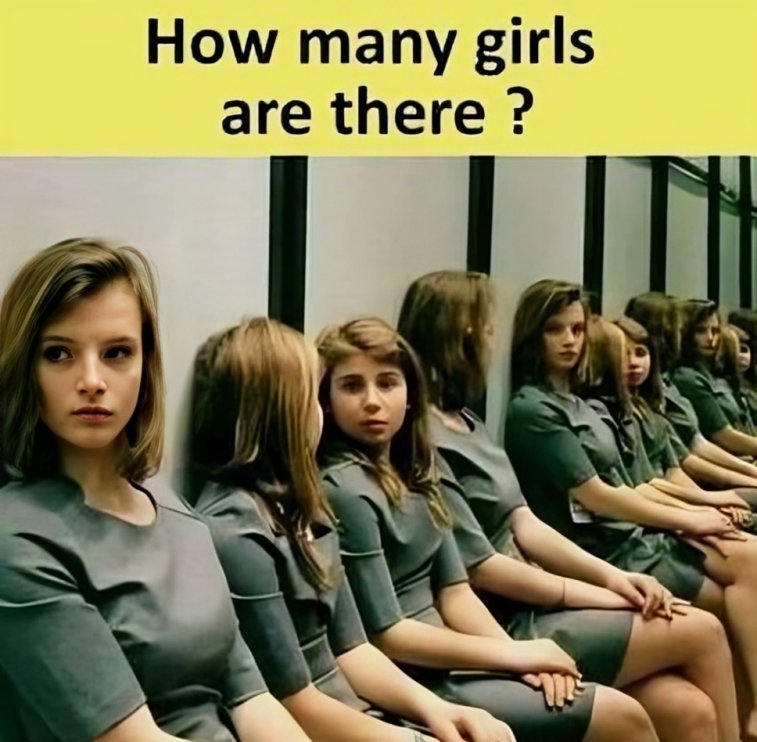Our brains are wired to recognize patterns, faces, and objects in certain ways, which is why optical illusions can completely deceive us. A well-placed mirror can manipulate perception, making us believe we see more than what’s actually there. In the viral image featuring a row of girls sitting together, most people initially think they are looking at a group of individuals. But after careful analysis, the truth is revealed—there are only two real girls, while the rest are just reflections.
At first glance, the image looks like a group of identical girls sitting in a straight line. But something feels off. Their identical posture, facial expressions, and clothing create a sense of unnatural repetition. This is where our brain gets fooled.
When we observe more closely, we notice that some faces seem oddly aligned, and their positions feel almost too perfect. The key to solving the illusion lies in identifying the mirrors.
Mirrors can create an infinite loop of reflections when placed at the right angles. In this case, a series of mirrors are aligned in such a way that they continuously reflect the two real girls, making it appear as though there are many more.
-Consistent lighting: The uniform lighting ensures that reflections don’t have distortions or differences in brightness, which makes it harder to tell the real from the reflected images.-Human perception limitations: Our brains are programmed to quickly assume repetition means multiple people rather than reflections.Our brains take shortcuts to process visual information efficiently. Instead of analyzing every single detail, the brain quickly identifies patterns and fills in gaps. This is known as perceptual completion, where the mind assumes continuity based on what it expects to see.
Additionally, humans have a strong face recognition bias, meaning we automatically look for and process human faces first. When multiple identical faces appear in an image, the brain assumes they belong to different people rather than considering that reflections could be involved.
Magic tricks: Magicians use mirrors to create the illusion of disappearing objects or multiple versions of themselves. Architecture and interior design: Some restaurants and bars place mirrors strategically to make spaces look larger than they actually are.Movie special effects: Filmmakers use mirror techniques to create seamless illusions in movies, often tricking audiences into seeing something that isn’t truly there.
